|
|


|
| We
start our study off with a look at the most original or primitive form
of sovereign society that we know of: paleolithic society – or
‘old stone age’ society. This is society as we believe it to have
existed at the very beginning of human life on this planet. There are almost no such paleolithic societies left on this planet today, for modern life has reached into their world and changed their lives deeply. However only a century ago there were multitudes of paleolithic societies still tucked away in various corners of the earth, remnants of a social order we believe to be the one that all human life started out with long ago. Anthropologists went among these latter-day versions of these primitive societies and recorded their doings and their thought processes – as best they could given their own largely Western world view and thus understanding or interpretation of life. There are a number of things they described about these people that were similar – whether they were describing life in New Guinea in the Southwestern Pacific, or the Kalahari Desert in Southwestern Africa, or in the highlands of southern India, or in the frozen tundra of northern Europe, or the steamy jungles of Brazil. On the basis of this similarity they were able to generalize key features of human life and order among paleolithic peoples – generalities that it was easy to suppose also held true for a social order that presumably existed at the dawn of human history before civilization spread across the earth and changed everything. Paleolithic – and neolithic
The term ‘paleolithic’ itself refers to the level of development of the stone tools and weapons of these primitive peoples. ‘Paleolithic’ means ‘old stone’ and referred originally to a basic crudeness in the appearance such stone implements uncovered by archeologists in their diggings around ancient sites of human habitation. Archeologists noted that at these archeological sites the tools and weapons these ancient people used were made from minimally reshaped stones. When they contrasted these stone tools with the stone tools of more advanced societies (much more carefully worked and shaped and more effective for not only hunting but also for more advanced food production) they grouped the former type into paleolithic (literally ‘old stone’) and the more advanced group into neolithic (literally ‘new stone’) categories of ancient societies. Anthropologists studying actual primitive societies still in existence at the end of the 1800s were struck by how these societies still used the same types of stone tools. And thus some societies, more primitive than others, were labeled ‘paleolithic’ and some ‘neolithic, even though anthropologists were not that interested in their tools – but more interested in their social ideas, behavior and organization. The terms worked well nonetheless – for they noticed a sharp cultural distinction between the two groups, as if some great social revolution had set the two types of societies apart. Even though both groups were ‘pre-civilized,’ they were quite distinct one from the other in quite significant ways. So the terms ‘paleolithic’ and ‘neolithic’ were borrowed from the archeologists (people who study ancient social sites) by anthropologists (people who study simple, but still living societies). The terms worked very well for them – and they will help us in our study here as well. |

|
|
The paleolithic community: the "band."
Paleolithic man was a ‘food-gatherer’ rather than a food producer. He planted no vegetables or grains – but hunted or foraged for berries and roots that grew in the wild. He had no domesticated animal herds of his own but hunted the wild animals around him. Hunting is not a very efficient form of human life support. A huge amount of territory is required to sustain a very small human community on the basis of the social economies of hunting and foraging. Thus in general paleolithic society was based on very small groups, which anthropologists call ‘bands.’ These bands might be made up of no more than a dozen, or a couple of dozen, individuals. These bands tended to be highly nomadic, on the move constantly in pursuit of their next meal. There were exceptions to this of course, especially if a community was located in a prime spot such as along a well-stocked river or lake where the fishing and hunting was excellent. Such communities could grow to several hundred in size. But these were dangerous areas – because human enemies tended frequently to fight the occupants of such an enviable location for the privilege of living there. Political organization
The headman. These primitive paleolithic bands were organized along very simple lines. Judging from the evidence of paleolithic communities that we have been able to observe in more recent times, they tended to form around a ‘headman’ who held the band together on the basis of his hunting skills – and his esteem as one blessed by the world of spirit. In fact his hunting skills were understood to be closely related to his spiritual powers. Under his protection or guidance were a small number of women and the children – and also a handful of bachelor males. The latter were loosely attached to the band, cooperating in the hunt and receiving a portion of the blessings of community life – including perhaps some time with the women. Women might also have been loosely attached – perhaps moving from band to band as greater protection for pregnancy, nursing and child-rearing was to be found elsewhere. As the connection between a particular sexual act and the birth of children nine months later was not particularly well understood, sexual rights were more a matter of social privilege than parental right and responsibility. Perhaps children were even thought of as belonging to the community as a whole and not just some particular male or female within the band. There may also in fact have been a loose sense of broader relationship among a number of such bands known to be hunting in a particular area – where band members may have felt it okay to move among such bands for longer or shorter periods of time. Shamans. Of special note were the shamans or witch doctors. They were understood to possess special magical powers that could be worked to the good – or the bad – of the community. As such, they were both greatly respected and greatly feared by those around them. Being thus endowed with exceptional spiritual powers, they usually were better appreciated at a distance. They did not usually live with any particular band but practiced their trade in a wide area that would include a number of related bands. These individuals may in fact have considered a large region accommodating many different bands as their spiritual territory, drifting in and out of the life of the various bands as the occasion required. They would possibly be invited into the precincts of a particular community only when their services were required, usually in the healing of a sick member of the community, be paid off in food for their services, and then be blessed as they moved on. |

|
|
Paleolithic culture: "Animism"
The paleolithic world view. Paleolithic man lived very close to nature, being really a natural creature himself. He lived on the basis of the food he could find or hunt – much as the rest of the animal kingdom. He grew or produced nothing by way of his own food supply. He depended entirely upon nature to keep himself alive. Actually we have to be careful using the term ‘nature’ for that is a modern concept – separating the visible world (nature or the ‘natural’) from the unseen world (the ‘supernatural’), the latter world having come under considerable disrepute of late by much of our scientific and scholarly community. Paleolithic man made no such distinction. To him there was no natural versus supernatural. They were both one and the same. To paleolithic man there was a great dynamic to all of life, not only all of life around him but also his own life. Life was basically a struggle, though a harmonious struggle, in which everything fed everything else so as to produce a constant flow of life and death around him – and even within him. He did not see life as we moderns do today – typically a rather mechanical process of physical laws operating on largely distinct objects making up the material world around us (and of which we are also a part). Rather, paleolithic man saw life as essentially what we would term today ‘spirit.’ Spirit gave life. Spirit fashioned behavior – of not only both man and beast, but also of trees and rivers and mountains. Spirit caused things to ‘flow.’ Anthropologists were intrigued at how paleolithic man saw spirit inhabiting everything – things even such as rocks and rivers and mountains and stars to which the Westernized anthropologist would never have thought to assign ‘life.’ The paleolithic man assigned life or spirit to everything – seeing ‘animation’ or life all around him. Thus the anthropologist ultimately assigned the term ‘animism’ to paleolithic man’s belief system or world view. And this probably is an accurate description of how paleolithic man indeed did see things. To paleolithic man, all of life was activated or ‘animated’ by spirit. The workings of the world of ‘spirit’ gave action or life to everything that existed – including clouds, bears, lightning, berry bushes, snakes, water falls, fish, high mountains, his bows and arrows, his hut, his fire – and each other. A parable of sorts
A young man heads off into the surrounding woods for a hunt of meat (perhaps bear or deer) that will take him away from his small community for a number of days. Upon his return he is devastated to discover that in his absence a huge boulder had come crashing down from the mountain that the community had nestled under and smashed into his hut killing his wife and dog. In an effort to bring some sense to this tragedy he consults a local witch doctor to see what he can learn from him about what happened. In a trance which invites the witch doctor into the world of spirit, the witch doctor explains the cause. His dog had been chasing a rabbit up the mountainside – and had lost out in the pursuit when the rabbit disappeared down a hole. The dog took his frustration out on a huge boulder nearby by lifting a leg and letting go a yellow stream on the side of the boulder – to which the boulder took great insult. The boulder avenged the insult by noting that the dog had entered the hut just below him – and decided to act. The dog was crushed in the event. But so was the hut. And unintentionally, the wife was crushed as well, an innocent bystander in this drama. Of course his drama doesn’t end there because now the young man has to find vengeance of his own. Nonetheless that’s where our story will end. This little and rather ridiculous story probably never happened, though things like it certainly did in paleolithic culture. For this is how paleolithic society saw all events. Life was a result of the invisible workings of the spiritual world. The spirit or spirits inhabiting all things set up the dynamic of life in concert with each other – acting and reacting ‘behind the scenes’ to make things happen as they did. "Pre-enactment"
We have all probably seen pictures of young Indian braves or hunters dancing around a campfire to a strong drum beat, chanting and spinning. One of them possibly wears a buffalo skin and the others seem to be focused on this particular individual. Very likely they are ‘pre-enacting’ a great buffalo hunt, their actions constituting a sort of spiritual ‘technology’ designed to align the unseen spiritual world of the buffalo with their own spiritual powers – in a way that guarantees their spiritual ascendancy or domination in the contest of spiritual wills (theirs and the buffalo’s) that is soon to take place with the beginning of the hunt. They may be very expert bowman. But whether they actually succeed in the hunt depends more on the spiritual alignment of their spirit or spirits (along with possibly the spirit of the arrow or bow) and the spirit of the buffalo. Other "spiritual technology"
Likewise if the hunt brings success there are important spiritual rituals to be performed. The spirit of the defeated buffalo must be appeased – lest revenge of some kind on the successful hunter should occur. Possibly there is a ritual in which the spirit of the buffalo that his been brought down is also trapped and captured by the successful hunter – adding to his own spiritual powers. All of this may seem to a modern mind to be very unnecessary. But to the paleolithic mind this is all very logical – and very necessary. His world view informs him that all events in life result from the actions of the spiritual world working in an invisible way in and through the visible world. The visible world of material reality is merely the outer form or dressing of an even greater inner reality. Is this spiritual world one or many? Are all the things that we observe as single items (a tree, a brook, a hawk, a girl, a mountain, a bow, a bear) comprised also of single, distinct spirit each – or is the spiritual world a single Great Spirit that inhabits everything – or is it some combination of the two? That really depends on how the world view of a particular community (and its neighbors who probably share a similar world view) understands these things. But one thing is certain: its is spirit, not material or physical existence, that is paramount in shaping or determining the course of existence. |

|
The Laussel Venus - Gravettian
Culture (Dordogne, France)
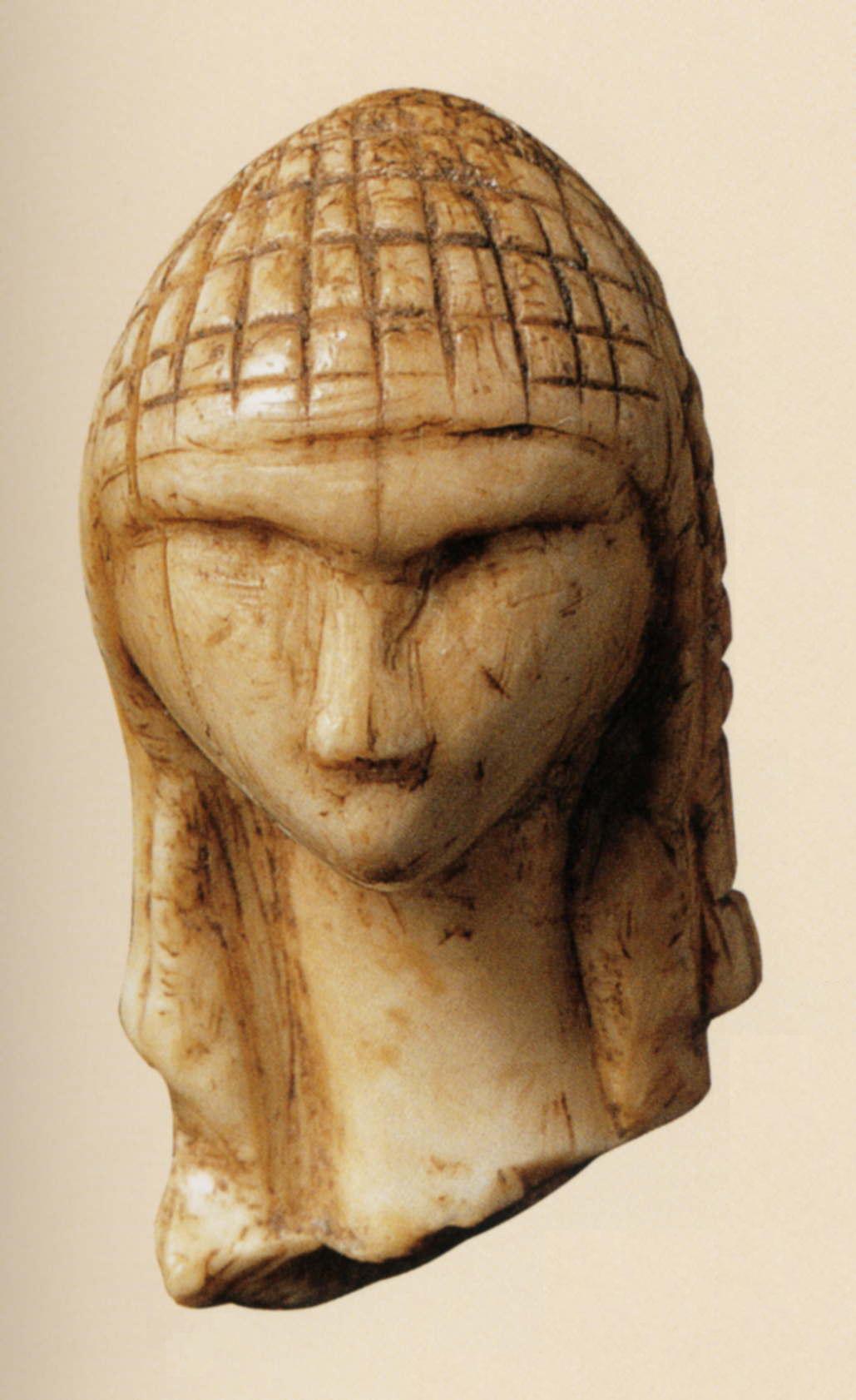
Head of a woman known as
the "Venus of Brassempouy" – Gravettian (c. 27,000 BC) Mamouth
tusk
Brassempouy (Landes,
Frances)
Saint-Germain-en-Laye, Musée
des Antiquites nationales
Female statue known as the
"Venus of Lespugue" – Gravettian (c. 27,000 BC) Mamouth tusk
from Lespugue (Haute-Garonne,
France)
Paris, Musée de
l'Homme
Lascaux Cave - discovered
in 1940
Lascaux Cave - discovered
in 1940
Cro-Magnon cave painting
from Lascaux, southern France (20,000 years ago)
Horses – Hall of the
Bulls, Lascaux Caves, France (c. 15,000 - 13,000 BC) paint on
limestone
Bull, horses and stag – Magdalenian
(c. 18,000 BC) detail of painted wall
Chamber of the Bulls, Cave
of Lascaux (Dordogne, France)
Bison – Altamira Cave,
Sandtander, Spain (c. 12,000 BC) paint on limestone
Bison – Magdalenian (c.
18,000 BC) deer antler
from the cave of La Madeleine
(Dordogne, France)
Saint-Germain-en-Laye, Musée
des Antiquites nationales
Painted stones – Mesolithic(c.
10,000 BC) stone
from Mas-d'Azil (Ariège,
France)
Saint-Germain-en-Laye, Musée
des Antiquites nationales
Easter Islanders of the Pacific
Shadowed in mystery, a stony sentinel called a moai guards the secrets of Easter Island
Its jutting chin personifying
power, a massive moai, one of nearly 900, rises
against the stark landscape
of one of the most isolated places on earth - Easter Island.
Maoi look down on an abu,
a plaza where rituals and dancing were performed
Rock art decorates the entrance
to an Easter Island cave
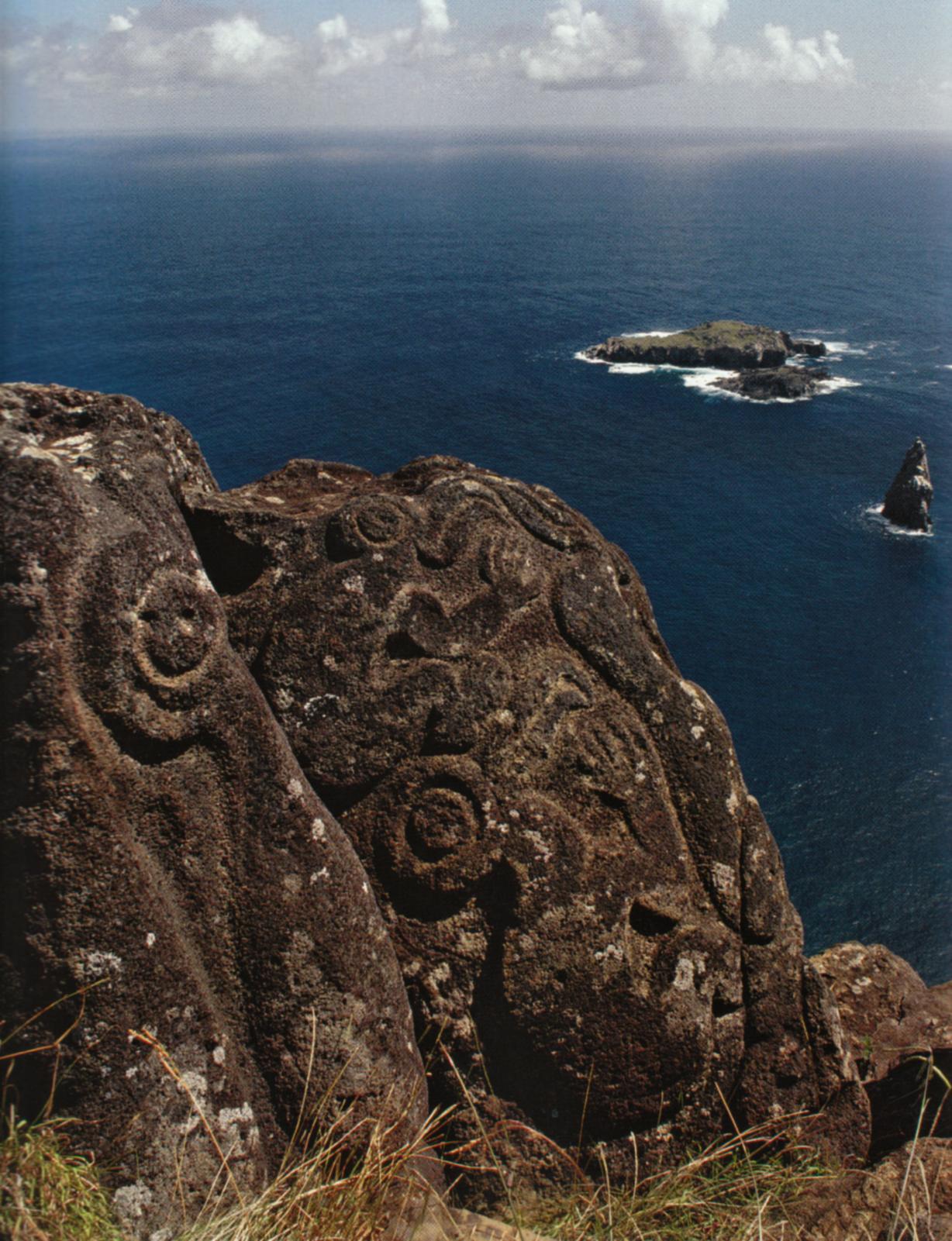
|
Beneath rocks carved with the image of a creature half bird and half man, young men from each clan would scramble down steep cliffs for an annual swimming race to the small isle of Motu Nui. On the islet, they competed to find the season's first egg from the Sooty Tern. The winner presented the egg to his clan representative, who assumed the status title of Birdman, or Tangata Manu, the creator god's surrogate on earth. |
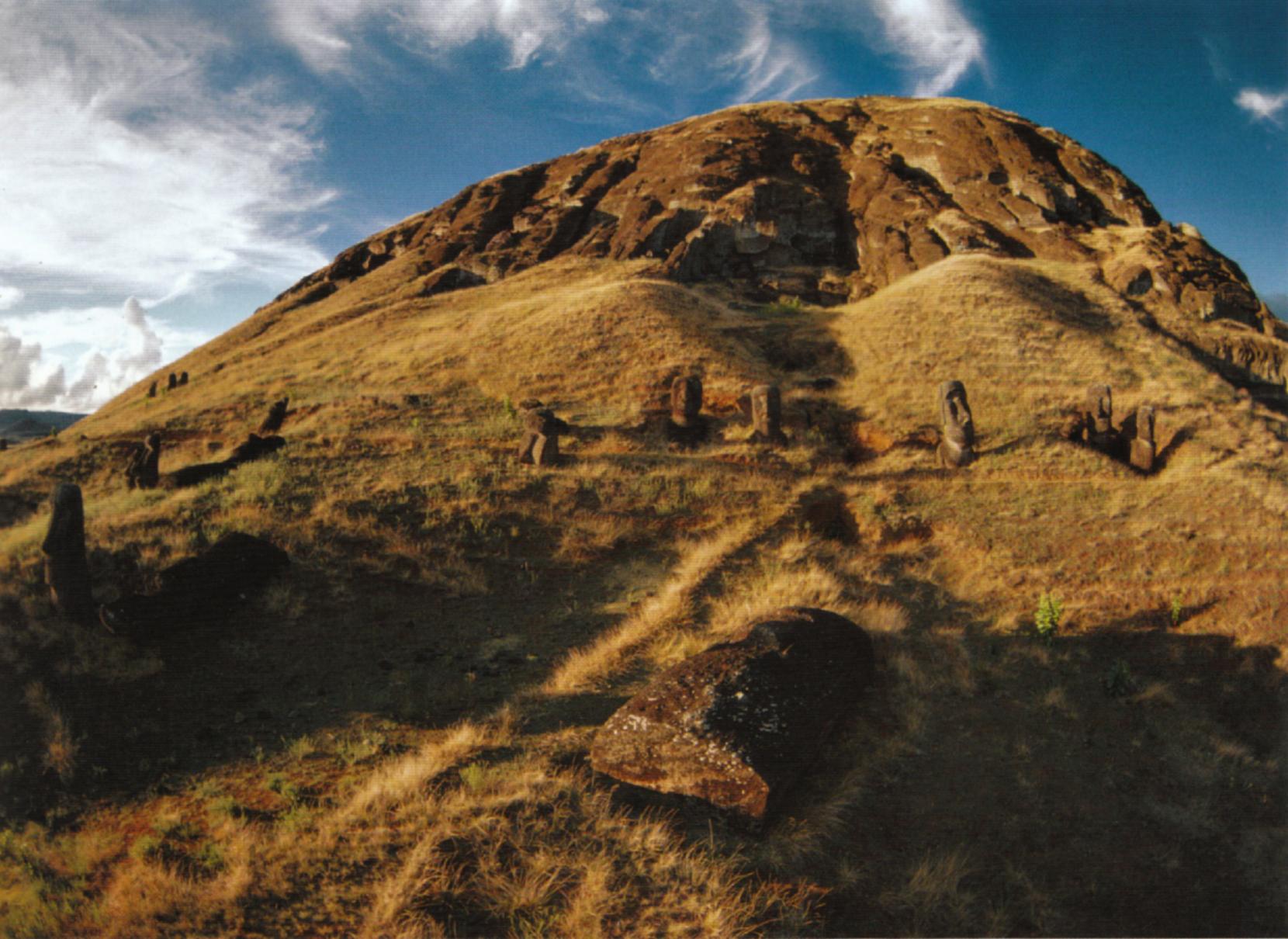
Like tombstones on a hill,
giant statues dot the slopes of a defunct volcano.
Easter Islanders chipped
at the volcano's soft rock with heavy stone picks to shape
the moai, leaving
some unfinished at the volcano's summit.

|
The hunter-gatherers of the Amazon rain forest in Brazil
The Awá of Brazil's
Amazon Forest
Fiona Watson /
survivalinternational.org
An Awá hunter
D Pugliese /
survivalinternational.org
The Akuntsu of Rondonia,
Brazil (on the Bolivian frontier)
soldepando.com
The Hadza people of northern Tanzania
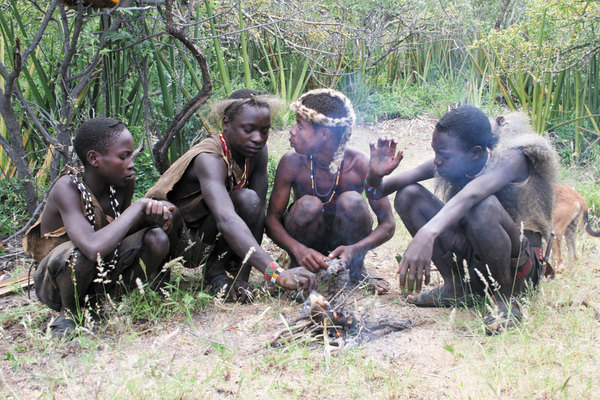
The Hadza people of northern
Tanzania
nature.com
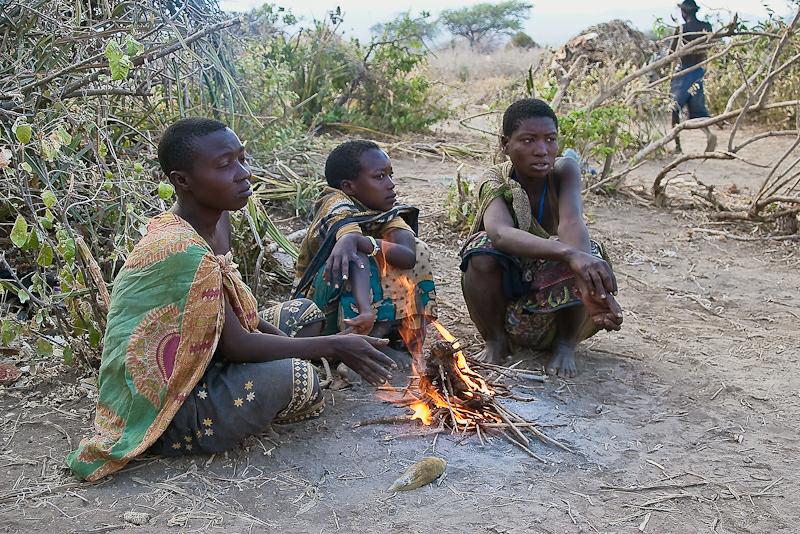
The Hadza people of northern
Tanzania
in2eastafrica.net
Hadza hunters (Hazdabe) returning
from a hunt
The San or Khoisan of the Kalahari Desert in Southern Africa
The San or Khoisan of the
Kalahari Desert (Botswana, Namibia and South Africa)
bluenred.files.wordpress.com
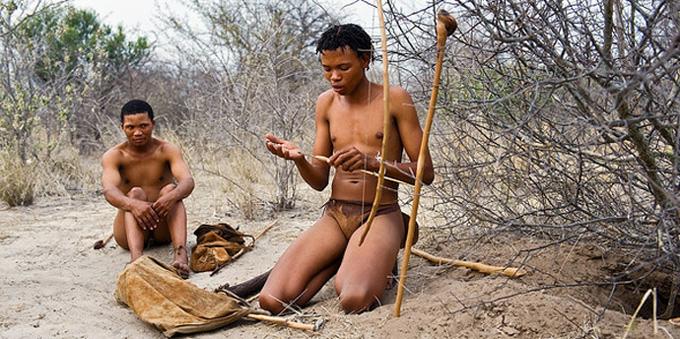
The San of the Kalahari
Desert
kwekudee-tripdownmemorylane.blogspot.com
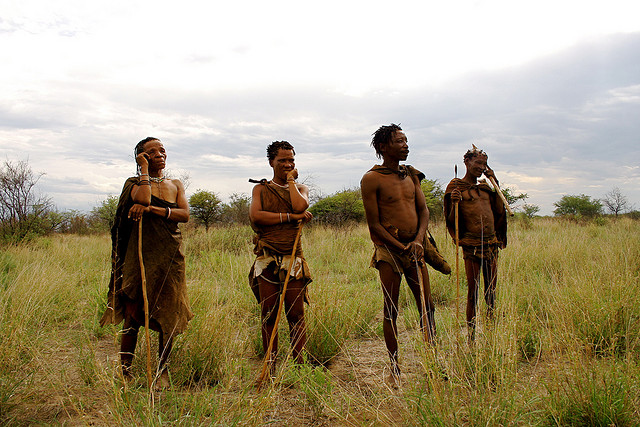
The San of the Kalahari
Desert
kwekudee-tripdownmemorylane.blogspot.com
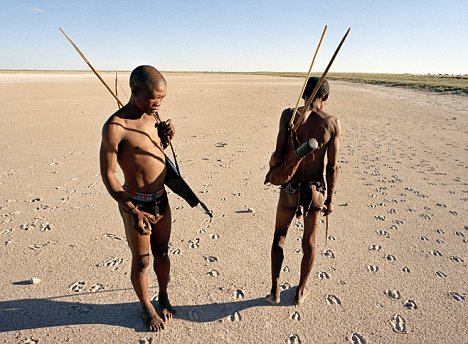
San hunters tracking wildebeest
in Namibia
kwekudee-tripdownmemorylane.blogspot.com
The Khoi-san of the Kalahari
Desert
justfoodnow.com
"Bushmen" or San of
the Kalahari Desert
nomadtours.co.za
The San of the Kalahari
Desert
kwekudee-tripdownmemorylane.blogspot.com
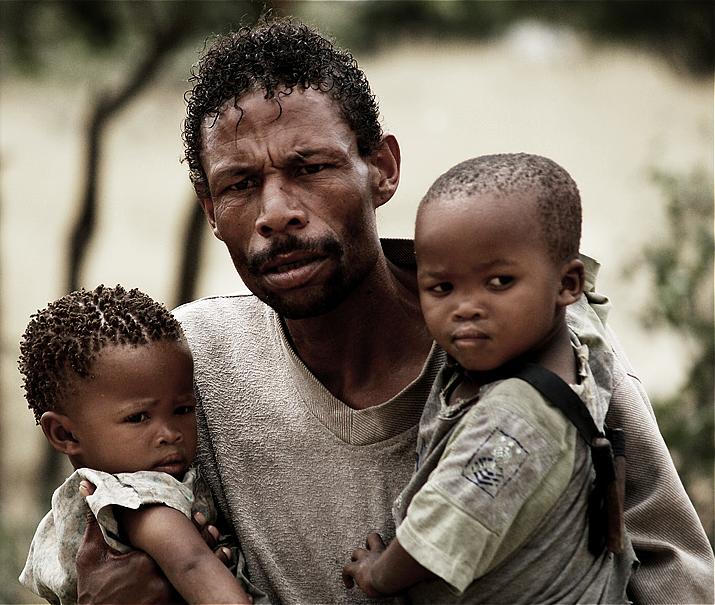
A San Bushman carrying his
two kids
farm4.staticlflickr.com
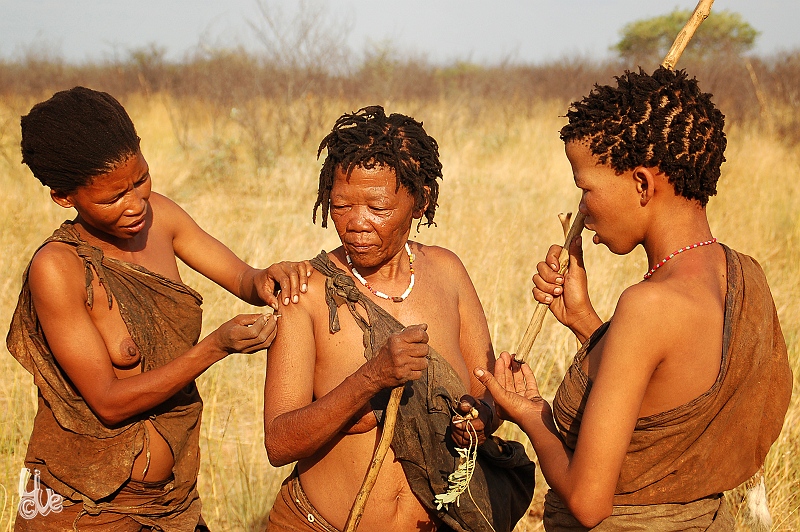
San women of Ghanzi in
Botswana
kwekudee-tripdownmemorylane.blogspot.com
San starting a fire
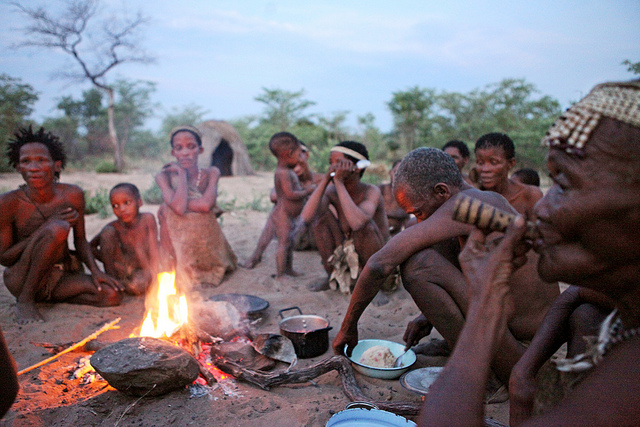
Bushmen (San) tribe, Tsumkwe,
Namibia, having their meal by the fireside
kwekudee-tripdownmemorylane.blogspot.com
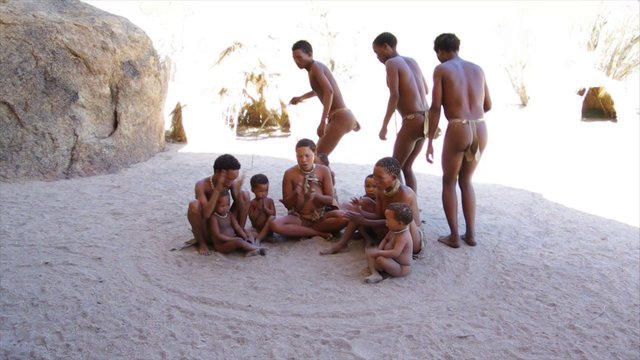
Cagn/Kaggen is the name the
Bushmen gave their god
kwekudee-tripdownmemorylane.blogspot.com
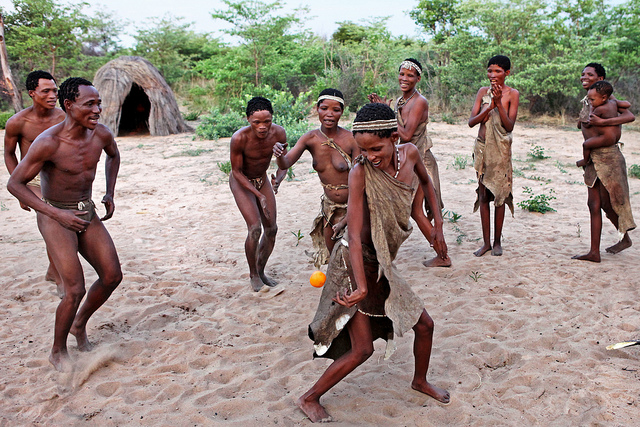
The shamans and medicine
people
kwekudee-tripdownmemorylane.blogspot.com
San healing dance
kwekudee-tripdownmemorylane.blogspot.com
The Australian aborigine people
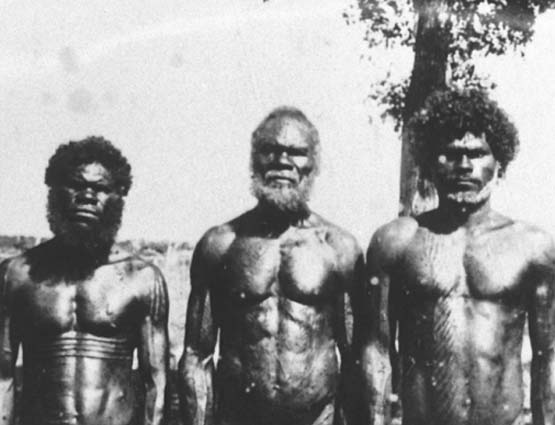
Bathurst Island men - Australia,
Northern Territory - 1939
National Archives of
Australia
Arms raised, evil spirits
called Quinkans stand guard on cave walls in Cape York, Australia.
Australian Aborigines thought
ancestors called Wandjina came back to leave the image on rocks.
Passed over a ritual fire,
an Australian Aborigine child is baptized with pungent smoke.


 Miles
H. Hodges
Miles
H. Hodges